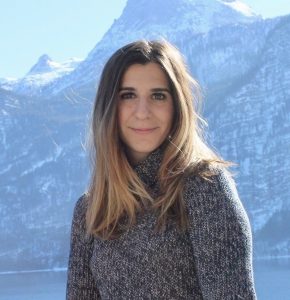Melis Ökter – Environmental Specialist/Coastal Planner – Dudek
 Melis Ökter is an environmental scientist and coastal planner aiding local governments in developing sea level rise and coastal hazard policies. Currently a coastal planner at Dudek, she helps several local jurisdictions and governmental agencies prepare for sea level rise. Most recently, Melis was selected to panel the City of Santa Monica’s public workshop, Local Coastal Program Land Use Plan, Planning for Resilience: A Sea Level Rise Discussion.
Melis Ökter is an environmental scientist and coastal planner aiding local governments in developing sea level rise and coastal hazard policies. Currently a coastal planner at Dudek, she helps several local jurisdictions and governmental agencies prepare for sea level rise. Most recently, Melis was selected to panel the City of Santa Monica’s public workshop, Local Coastal Program Land Use Plan, Planning for Resilience: A Sea Level Rise Discussion.
Melis has over 5 years’ experience in environmental science, ocean and coastal resource management, and coastal planning throughout both California’s coastal zone as well as in Arctic environments, and has co-authored multiple scientific papers.
Melis spends most of her weekends outdoors, camping, backpacking, and traveling with her boyfriend and their dogs, or enjoying the beautiful coast she works hard to protect.
What is the educational and career path that led to your current career?
I attended undergrad at the University of California, San Diego where I double majored in Environmental Systems-Ecology, Behavior, and Evolution and Marine Biology, and minored in Music. My two favorite college internships were working in bee lab studying the effects of neonicotinoid pesticides on honey bee colony collapse disorder, and studying leopard shark migration patterns while working in shark lab at the Scripps Institute of Oceanography. Unfortunately, as I was nearing graduation, I started to feel as though there was so much incredible research being done all over the world, but a not as many individuals working to translate the science and help bridge the gaping gap between science and policy.
This led me to my grad school program at MIIS in Monterey, where I studied International Environmental Policy with an Ocean and Coastal Resource Management track. While there, I had the opportunity to do some amazing internships and fellowships, such as working for both the National Ocean Economics Program and NOAA where I tracked changes to natural resources and economic expansion in the Arctic and helped bring together various stakeholders to discuss pan-Arctic marine protected areas. After completing my masters, I was awarded a California Sea Grant State Fellowship with the California Coastal Commission, where I was a primary author to an expansive synthesis of the vulnerabilities to sea level rise in each of California’s 15 coastal counties, along with a statewide vulnerability assessment.
How did you become interested in environmental work?
Being Turkish-American, I was lucky enough to spend 3 months of every year in Turkey with my family, and spent most that time swimming and exploring Turkey’s breathtakingly blue seas. Growing up exposed to that sort of coastal and marine environment was life changing. But I also quickly became aware of how easily it could be lost, and as I got older I began seeing the dramatic side effects of pollution and over-development within the region. Seeing these sacred places diminish, I felt responsible to do something about it and devote my life to mitigating these losses. I knew immediately I wanted to work in the environmental field and protect not only California’s coast, but hopefully one day help stop the further devastation of coastal regions to my homeland.
What do you think are some challenges and opportunities facing women in the environmental movement today?
As with most scientific fields, working in the environmental field can definitely still feel incredibly male dominated. I believe that as a society we need to focus on STEM education and provide more opportunities for young ladies to pursue their passions for science and the environment. We can do so through all of our respective organizations by providing internships, speaking at school events, and/or volunteering with organizations which are already doing this type of great work. We also need invest more in our children, especially in underserved communities, and provide funding for them to spend quality time exploring our natural places and give them opportunities to interact with and fall in love with nature. Only by doing that can we motivate and uplift the next generation of young female environmentalist.
I also think a major challenge in this field is supporting women of color, which we can only do by braking institutional barriers and lifting WOC up early and often. It is really exciting that we are seeing more diversity within the field, but there is still a lot of work to be done on this front as it can still feel isolating and intimidating for WOC to enter into this space.
If you’d like to contact Melis, you can connect with her on LinkedIn.
